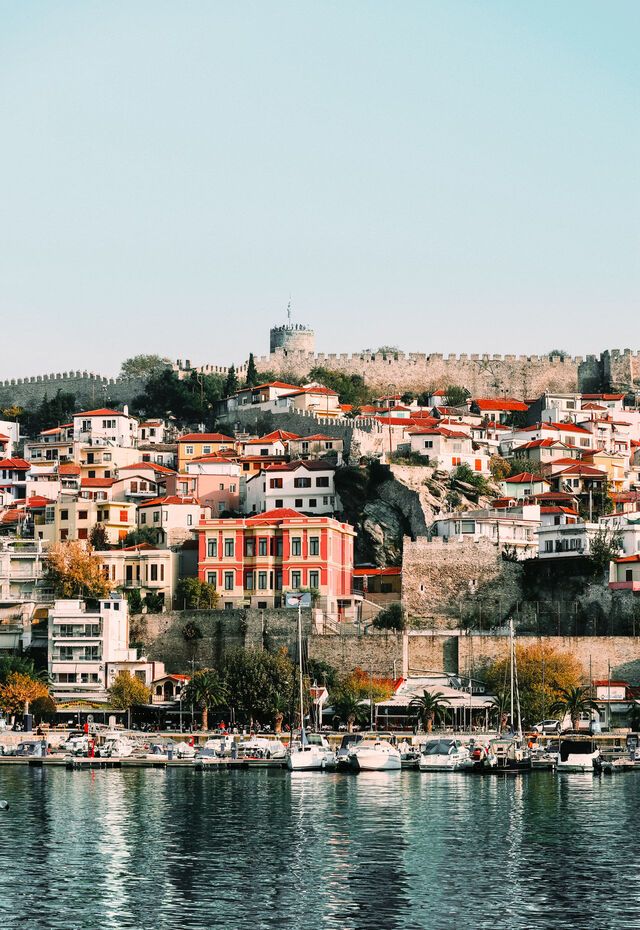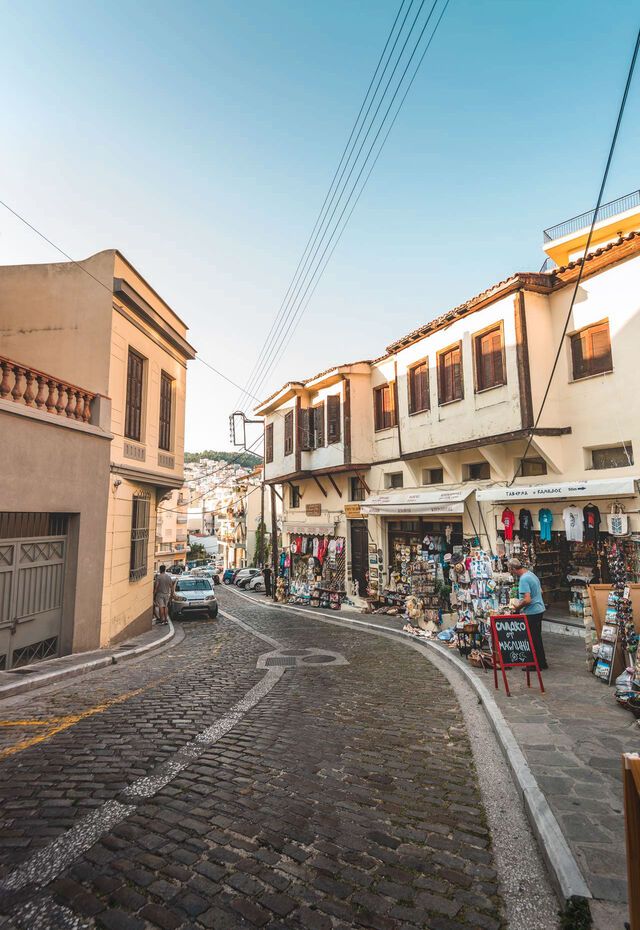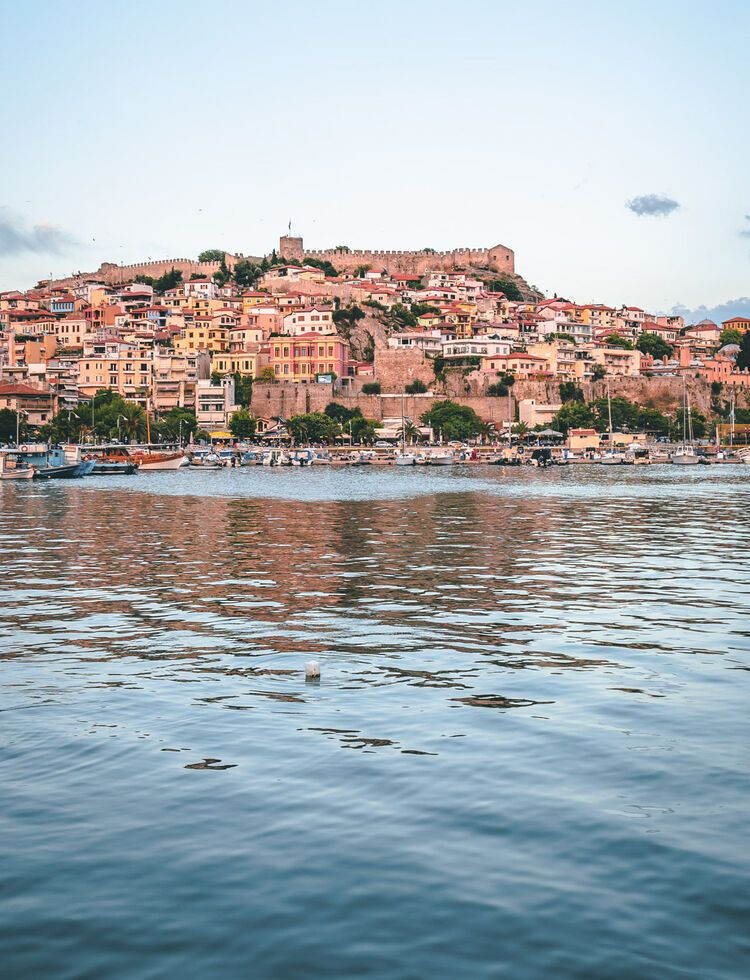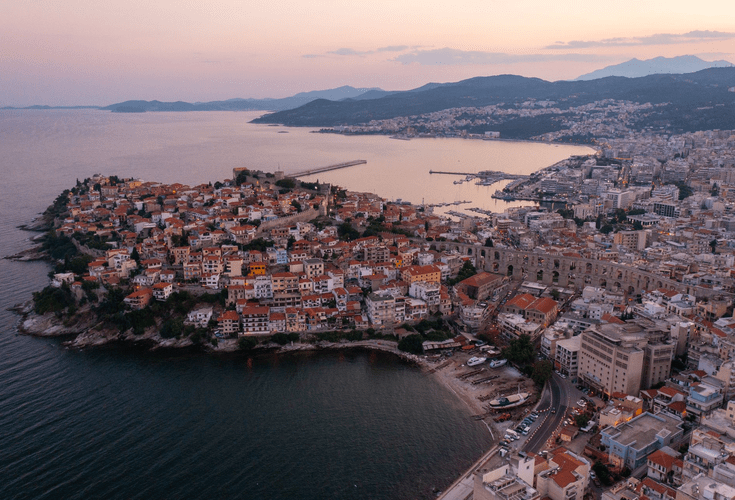

OVERVIEW
A city by name but a town by look and feel, Kavala is built at the crossroads between East and West in northern Greece. It was Neapolis to the Ancient Greeks and Christoupolis to the Byzantines, and has over time passed under Venetian and Ottoman rule. The Romans, meanwhile, understood its strategic importance and included it along their all-important Via Egnatia trade route.
It was the Ottomans who began to restore Kavala’s infrastructure in the 16th century, after its destruction at the end of Byzantine rule. But so too is its more recent history as a prosperous tobacco-growing centre in the late 19th and early 20th century evident, notably in the former tobacco warehouses.
The influences of this rich history are narrated as you walk the streets of the Old Town and beyond. You can hear it in the architecture and feel it in the welcome of a truly multi-cultural city. And you can taste it in the food – the spiced, sweet and peppery influences of tobacco merchants returning from their travels or settlers from Asia Minor. You have to try the spiced pilaf and, of course, the fresh seafood anywhere in the city or in the little port of Sfageia, 10mins from the centre.
With hills to the north and the Aegean Sea to the south, Kavala has the rare ability to offer a mountain-and-sea charm. So put on a comfortable pair of shoes and prepare to set out.
DON'T MISS
The Old Town
A stroll around the Old Town – and particularly the district of Panagia – allows you to witness Kavala’s 2,500 years of history effortlessly. Quiet cobblestone roads, multi-coloured houses with wooden balconies, and flower-filled courtyards are supplemented by wonderful sea views.
The Kamares Aqueduct
The 270m long and 25m tall (at its highest point) arched aqueduct was once the town’s lifeline and is now its principal landmark. It was one of the major civic infrastructure works of the Ottomans and is believed to have been built on a Roman aqueduct on the same spot. It supplied the city’s water into the early decades of the 20th century.
The Acropolis
The peak of the peninsula on which the Old Town’s Panagia district is built is dominated by the Acropolis of Kavala, constructed in the 15th century over a Byzantine acropolis on the same spot. It served as a fortress to control the all-important trade route and was used as recently as the 2nd World War by occupying forces. The views of the Aegean from here are sublime.
The Imaret
Built in the early 19th century by Mehmet Ali (founder of the last Egyptian dynasty) as a gift to his birthplace, Kavala, the Imaret served as a religious and educational institution for the Ottomans. It was later turned into a museum and has since been refurbished into luxury hotel. Take your time to explore the picturesque neighborhood, which has excellent tavernas.
The Old Lighthouse
No stroll around Kavala’s Old Town is complete with visiting the Old Lighthouse at the waterfront – or better still, taking the steps immediately below it onto the Rocks of Panagia, where you get closer to the smells and sounds of the sea. On a good day, you can see all the way to the island of Thassos.
Tobacco Warehouses and Museum
There are plenty of empty and renovated tobacco warehouses in the main town that never fail to produce atmospheric photos. Of those you can visit, the Municipal Tobacco Warehouse is one of the most interesting, having been adapted into a cultural venue. There is also the Régie Tobacco Warehouse, which is now a three-storey shopping mall. And the Tobacco Museum, with artefacts and archive material on the cultivation and production of tobacco and its socio-economic impact on Kavala.
A waterfront stroll
One of the simple pleasures of visiting Kavala is to take a stroll by the sea. From the Old Town, follow the waterfront all the way to the Faliro Park by the Archaeological Museum. As an extra tip, get yourself a box of half moon-shaped kourabiedes (icing sugar-coated almond confectionary), find a park bench overlooking the sea and nibble away.
GET PLANNING
From the airport
- By car or taxi: 31km (30 mins)
- By bus: More Info
- Kavala can be visited at any time of year, with every season offering something different.
- The ideal seasons to visit the city and surrounding countryside are spring and summer, when you can also discover the beaches and even the island of Thassos.
- Museums and cultural sites:
Tobacco Museum - Opening times
- Summer (June-September): Monday-Friday 8:00-16:00, Thursday 17:00-21:00, Saturday-Sunday 10:00-14:00
- Winter (October-May): Monday-Friday 8:00-16:00, Saturday 10:00-14:00
- Tickets: €2 (€1 reduced)
- More Information
- Autumn
- Spring
- Summer
- Winter
- The length of your walk is entirely up to you, but the attractions described here can easily be done in one day.
- Most of the hotels and shops are in the centre, so you’ll have plenty of time to explore.

